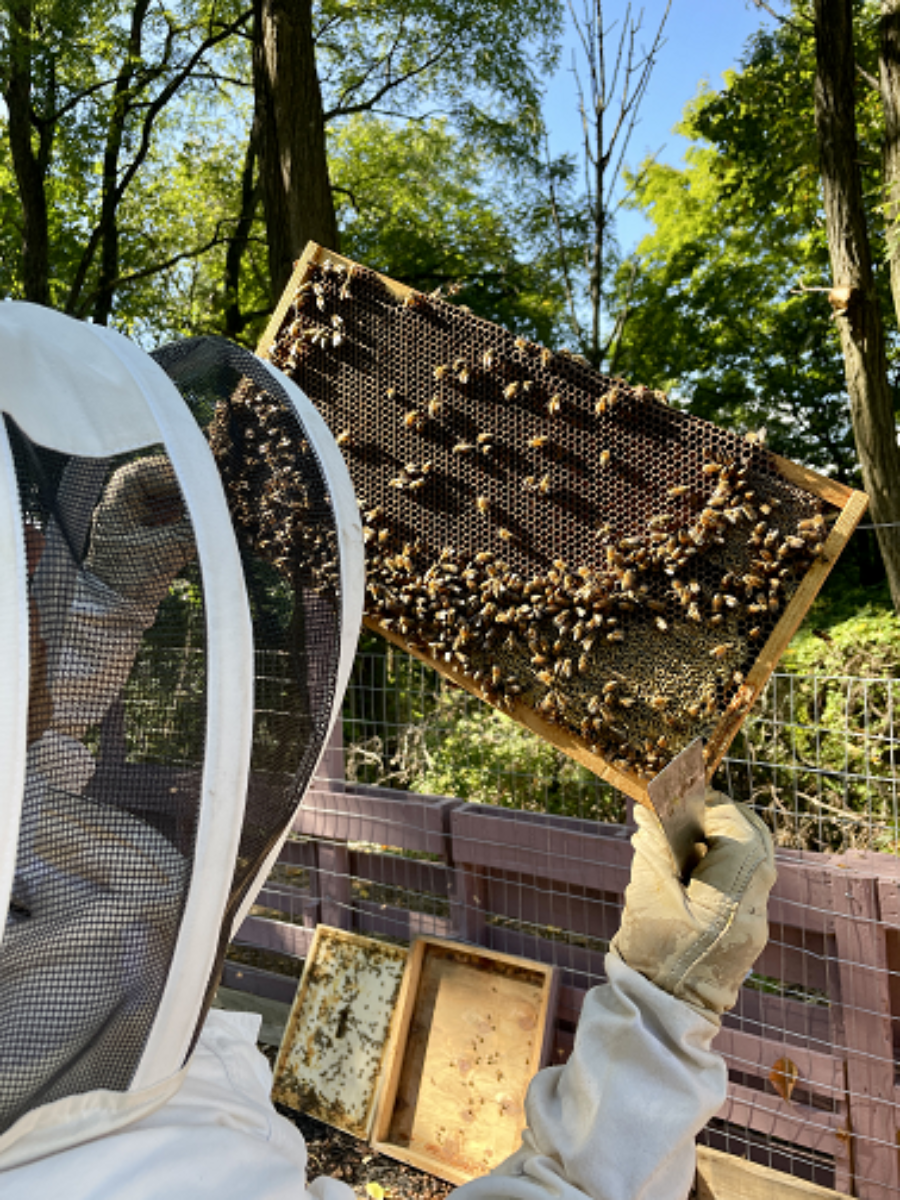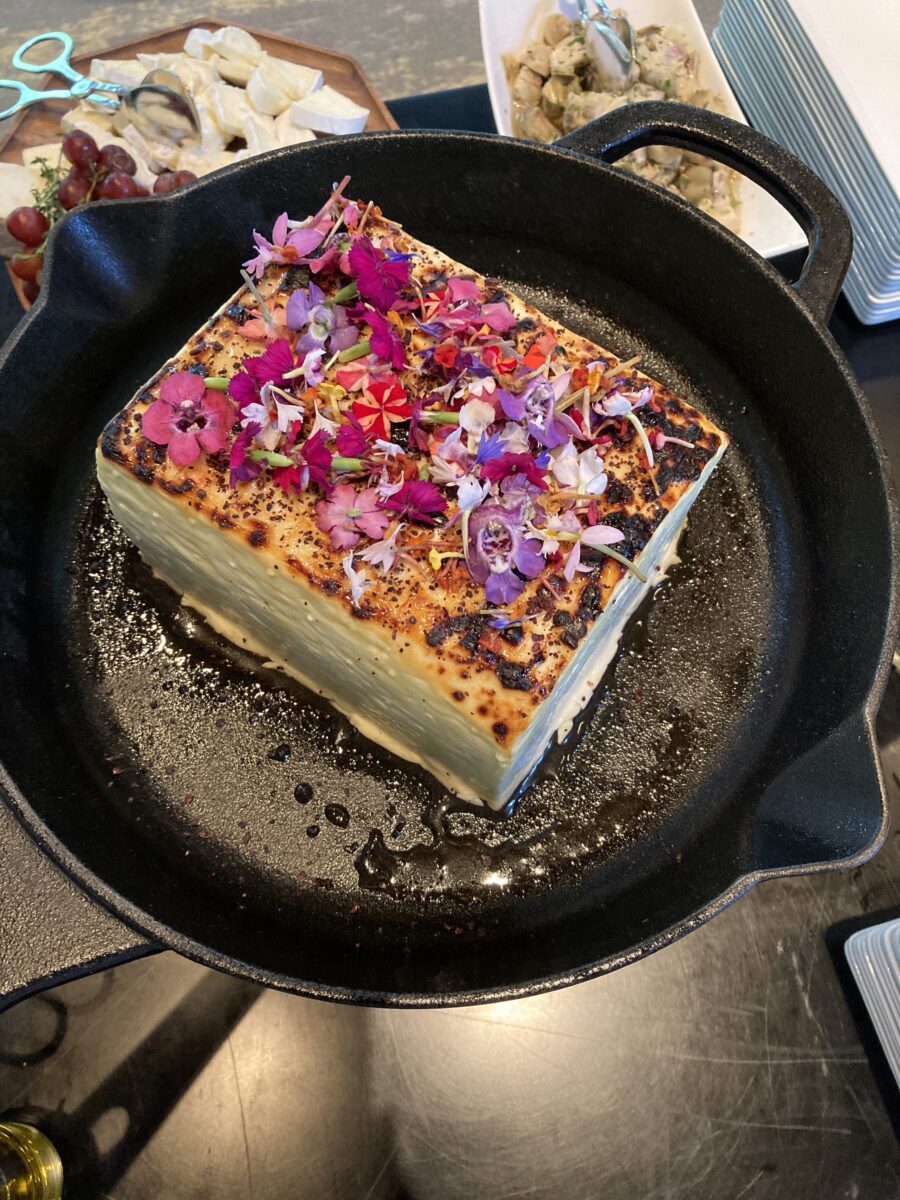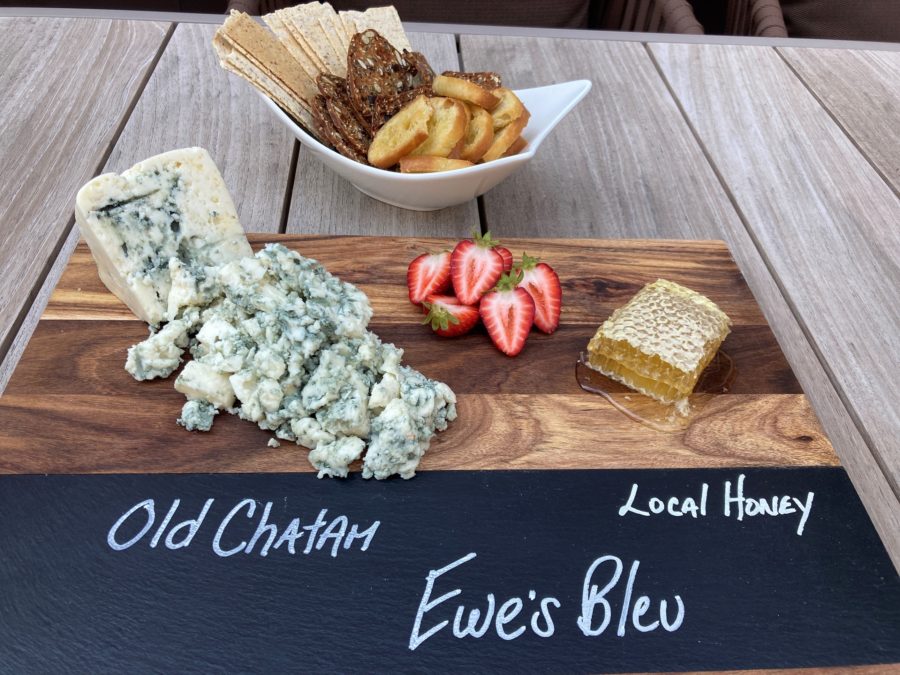
What’s the Buzz?
This article first appeared in Catersource on October 11, 2023.
By Amber Kispert
Editor's note: This is part three in our From Field to Fork feature. Check out part one (farming) by clicking here; check out part two (foraging) by clicking here.
The role of bees in pollination and the production of honey has long been acknowledged, but some chefs and caterers have now taken an active role in nurturing these essential insects. Beekeeping has become an exciting endeavor for many chefs who want to incorporate their own honey and other bee products into their culinary creations, while also helping to improve the food cycle as a whole.
“Honeybees are some of the most beneficial and important creatures in our environment,” said Chef Clodaugh McKenna for an article with Home & Gardens. “They’re natural pollinators, which means they help local flora reproduce and flourish. Honeybees positively influence all kinds of vegetation, from colorful fields of wildflowers to your backyard garden, to the crops we rely on to feed our society.”
Jeff Miller with Jeffrey A. Miller Catering* (New Jersey), who houses apiaries at this Waterloo Village property, agrees.
“The bees do double duty by pollinating the orchard and the vegetable garden, as well as providing us with fresh, and very local honey,” says Miller. “And, as bees across the country have faced colony collapse, it is important for folks to raise small hives in as many areas as possible.”
Bees are vital pollinators that have a huge influence on the health, productivity, and viability of crops and the natural environment. So, by taking care of the bees, chefs are also helping to increase the quality of their farm-fresh ingredients.
“It all begins with bees,” said Stavros in an article for Catersource. “More than 30% of all food we consume is dependent on the pollination the bees create—so we’re starting at the very beginning of our food.”
One chef, Jimmy Wessman, has taken an extremely active role in the health of bees. He has actually traded in his chef coat for beekeeping gear as he tends to 120 bee colonies with his company Bottom Stung Beekeepers, and the honey is then provided to several hotels and resorts, including The Ritz-Carlton and the JW Marriott Orlando, where it is used in the in-room dining and breakfast offerings, in the spa, and at the restaurant.
“I knew there was a culinary component to keeping the bees, and as a chef, I felt like I could offer that insight along with my knowledge of bees,” he said in an article for Marriott. “It has been a great fit for me.”
When keeping bees, chefs and caterers have to be conscious of how they utilize the honey, however, since only about a teaspoon of honey is the life’s work of a dozen bees.
"You don’t realize how precious honey is until you become a beekeeper,” says Karen Killough, owner of Vista Brewing (Austin, TX), which houses apiaries (or hives) onsite and utilizes the product within their beer recipes and on their menus. “This has greatly affected my perspective on how we use honey in dishes. Instead of using honey as a base generic sweetener, we like to use honey more as a finishing touch, a flavorful addition to highlight its unique local flavor. We particularly like to use fresh cut honeycomb as an accent on a cheese board or dessert.
“There is no comparison between fresh and store-bought honey—honey is a truly local, agricultural product. The flavors of your local honey are unique and tied to a specific place.”
For Juliet Olson, with Epicuriosity Catering (Dunsborough, Australia), beekeeping offers a lot of fun (and education).
“It’s a fascinating hobby that becomes completely absorbing,” she says. “We enjoy being small scale and keeping a close eye on what’s happening in the hive. There’s no end to the learning.
“It’s important to understand that bees need caring for— you can’t just set them up and forget about them until you’re ready for some honey. Regular observation ensures you’re aware of what’s happening in the hive.”

At IBM’s Louis V. Gerstner Center for Learning in Armonk, NY, FLIK Hospitality’s Chef Will Pfeiffer is taking his commitment to “local” and “sustainable” to new heights thanks to his honeybee hives located on-site at the FLIK-managed conference center and hotel.
FLIK Hospitality Group has even started to generate some buzz due to its partnership with its corporate chef Will Pfeiffer (IBM’s Louis V. Gerstner Center for Learning) who has developed custom-built hives and honey-powered new menu items (click here for recipes).
“At FLIK Hospitality Group, we really believe in seasonality as a core value to our menu curation and that’s really where it starts. We want to celebrate the season and procure local ingredients wherever possible. Knowing we have honey onsite adds an extra layer to our menu innovation,” says Pfeiffer. “This summer we leveraged the honey in items like a Baked Honey Feta with Sumac (see recipe below) and a Bourbon Old Fashioned Panna Cotta with Burnt Honey. As the fall approaches, I can’t wait to pair New York apples and local cheddars with our honey. I understand how much work and effort goes into making raw-unfiltered and unheated local honey now, so the ingredients that we pair with our honey are chosen very carefully and executed at different levels.”

Baked Honey Feta with Sumac
Ingredients
| 1 whole block of sheep's milk feta (8 oz) |
| 2 tbsp olive oil |
| 2 tbsp local honey |
| 2 1/2 tsp sumac |
| Edible micro flowers |
Instructions
Preheat the oven to 350 degrees.
Place the block of feta onto a small cast iron skillet. Drizzle with olive oil and bake at 350 degrees for 12 minutes.
Remove from the oven and coat with honey and sumac.
Broil for 4-5 minutes, until the sumac is toasted and the cheese starts to soften.
Remove and garnish with micro flowers. Serve warm with pita chips, crackers.
FLIK has also started offering a honeycomb carving station during events.
“The entire culinary team plays a role in the beekeeping process, and we step up for each other in the kitchen when someone else is tending the hive,” says Pfeiffer. “To say I’m obsessed is an understatement, but beekeeping isn’t for the faint of heart though.”
In the catering industry, where every detail matters, chefs and caterers who produce their own ingredients are setting a new standard of excellence. Whether through foraging, farming, beekeeping, or other innovative approaches, these culinary trailblazers are demonstrating a deep respect for nature and a commitment to sustainability.
“A chef who is in touch with their local farmer, rancher, and beekeeper will be in tune with what’s in season and fresh,” says Killough. “Choosing local products, at their freshest, not only promotes the health of our local food systems, but also creates the best tasting dishes.”

Interactions on the Farm
While self-sourcing ingredients brings a lot of benefits within the kitchen, it also brings an added element to the guest experience. By self-sourcing ingredients, guests have the opportunity to fully know the story of their food.
“Encouraging guest involvement is a great way to get them engaged, and help to really drive home the message,” says Alan Bergo (The Forager Chef).
There are a few different ways for guests to experience their food in a completely different way. One option (from the foraging perspective) would be to participate in a simple plant walk before dinner where guests can gather to identify plants together and then see first-hand the process for cleaning and prepping, before heading into the kitchen where the food is prepared.
“That way they leave with knowledge of how to do it themselves and are empowered,” says Bergo.
Chef Will Pfeiffer at IBM’s Louis V. Gerstner Center for Learning welcomed guests to their onsite apiaries during their inaugural honey harvest where they spun the honey themselves, completed a honey tasting to compare different floral varieties, and culminated with a culinary feast that paired small bites and cocktails with touches of honey.
On the farm side of things, at Zingerman’s Cornman Farms guests can even have a say in what crops are grown. They’ve had guests bring seeds from grandparents, which are then planted and grown.
“We even have guests who plant a crop themselves and pop back throughout the season to tend it with us and then harvest it on the day leading up to the event,” says Chef Kieron Hales. “More than ever couples want an experience in addition to a meal.”
Other experiences that Cornman Farms has offered over the years include guests and their children helping harvest crops before making lunch together, and they’ve even had guests pick fresh herbs during cocktail hour to be used in their drinks. Pizza dinners are also very popular, where guests can pick, wash, cut, and top their pizza right in the fields.
“You can connect on a level that simply stopping at the farm might not allow,” says Keith Sarasin (the Farmer’s Dinner). “Connecting with food is a right, not a privilege, and at our events, the customers sit just feet from where the food they are eating grows while the farmers engage and tell stories about the farm.”

Bourbon Old Fashioned Panna Cotta with Burnt Honey. Photo courtesy FLIK Hospitality
“I take menu development very seriously regardless of if I am using my own harvested ingredients or not,” says Pfeiffer. “Now, it’s a completely different story. I’ve always been a foodie and have a great appreciation for the quality ingredients used in each dish and the process it takes to get there. I believe great chefs have an intimate relationship with the ingredients they choose to use.”
+++
At FLIK Hospitality Group we believe in great food, great service, and great people. Our wellness first approach ensures our food supports healthy and delicious choices, specially curated by our team of culinary experts and registered dietitians. At FLIK, we believe in seasonality in sourcing our ingredients and providing a customized approach to the culinary and hospitality needs of each client. Our dedication to providing quality hospitality service is unparalleled in the industry.
Have feedback or questions for our team? Email us at flikblog@compass-usa.com.
Interested in working with us? Apply today!